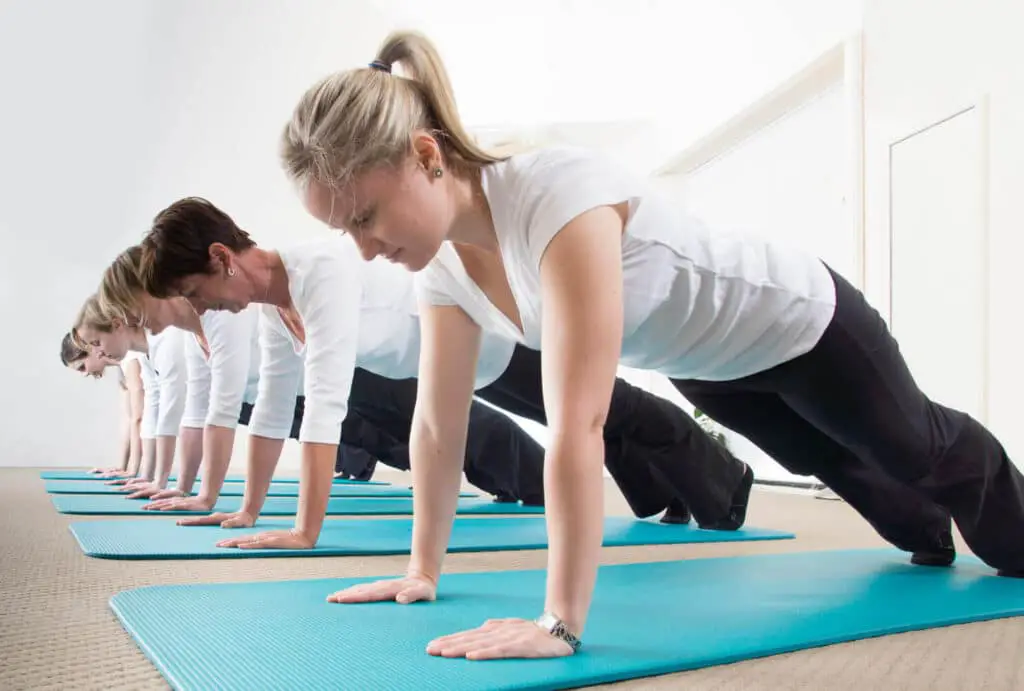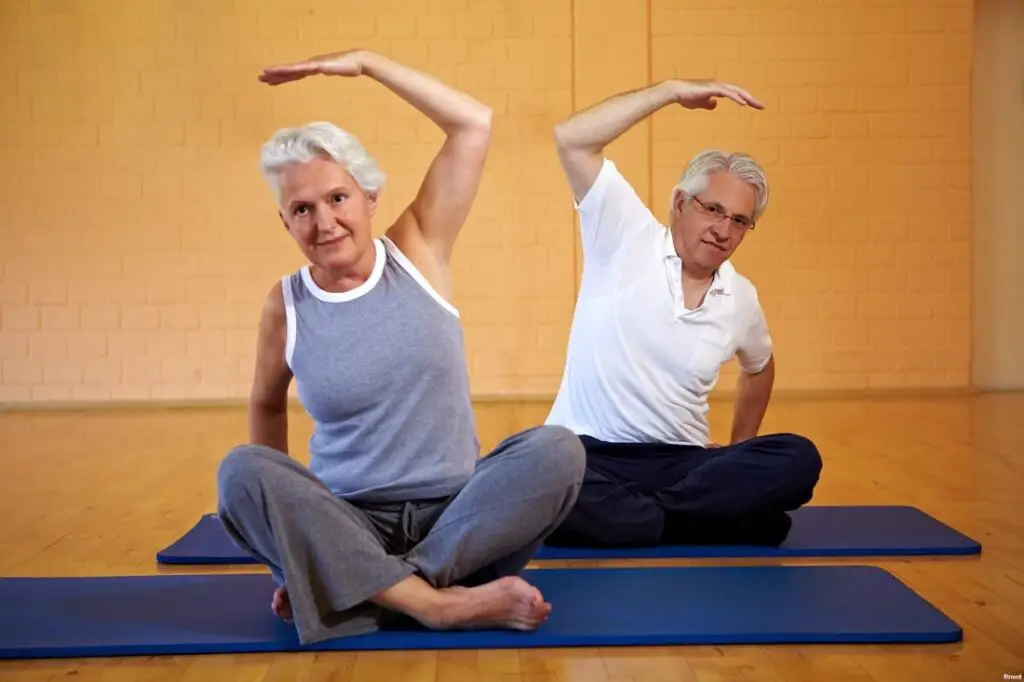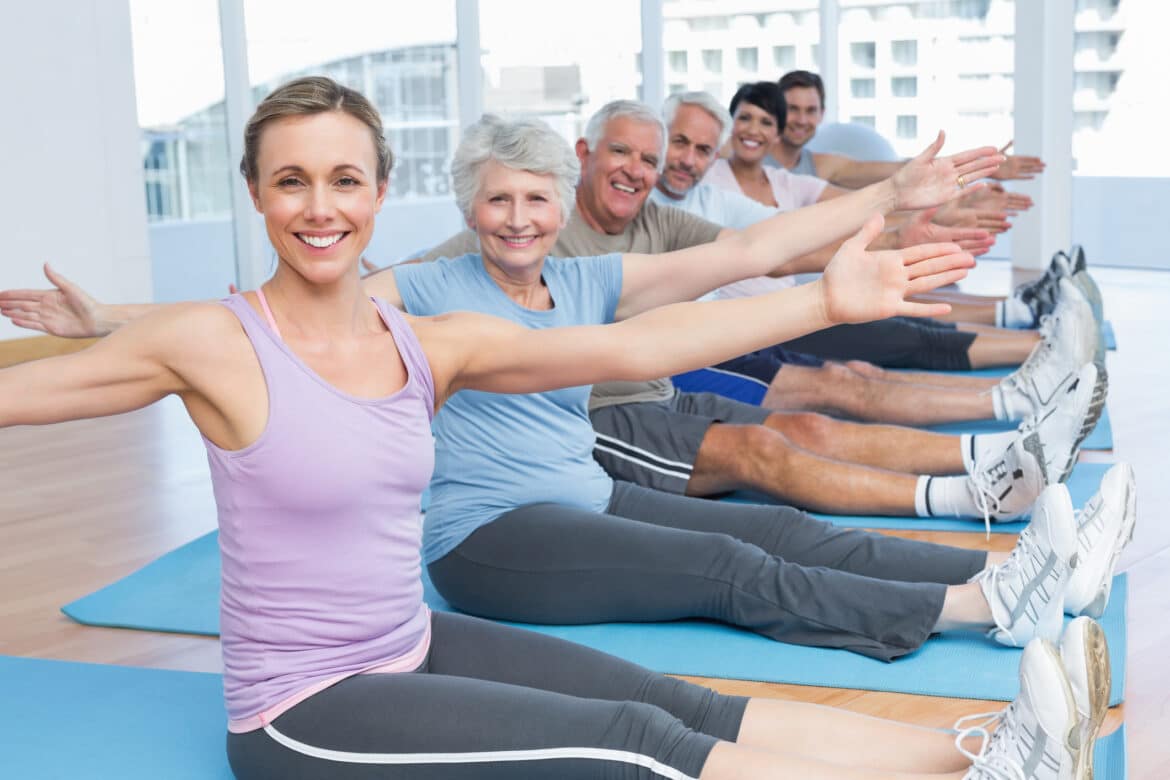Introduction
Which Is Better For Osteoporosis Yoga Or Pilates: Osteoporosis, a condition characterized by the loss of bone density and strength, is a significant health concern, particularly among older adults and postmenopausal women. This weakening of bones can lead to an increased risk of fractures and a decreased quality of life. Fortunately, lifestyle modifications, including regular exercise, can play a crucial role in managing and mitigating the effects of osteoporosis. Yoga and Pilates are two popular exercise modalities that are often recommended for individuals with osteoporosis due to their focus on flexibility, balance, and strength. However, they have distinct approaches and benefits that should be taken into consideration when determining which might be more suitable for an individual’s specific needs.
Yoga, an ancient practice that combines physical postures, breathing techniques, and mindfulness, offers several advantages for individuals with osteoporosis. It emphasizes gentle stretching, balance, and posture, which can help improve flexibility, reduce the risk of falls, and enhance overall body awareness. Some yoga poses also involve weight-bearing on the bones, which can stimulate bone health. However, not all yoga poses are suitable for individuals with osteoporosis, and certain modifications may be necessary to protect fragile bones. Pilates, on the other hand, is a modern exercise system that focuses on core strength, flexibility, and controlled movements.
It often incorporates specialized equipment such as reformers and resistance bands. Pilates can be adapted to accommodate individuals with osteoporosis by avoiding high-impact movements and emphasizing controlled, low-impact exercises that can enhance muscle strength and stability. Pilates can also improve posture and balance, reducing the risk of falls and fractures. To determine which is better for osteoporosis, it’s essential to consider individual factors such as the severity of the condition, personal preferences, and physical limitations. Consulting with a healthcare professional or a qualified fitness instructor who has experience working with individuals with osteoporosis is crucial for creating a tailored exercise plan.

Is yoga or Pilates good for osteoporosis?
modifications with osteoporosis. Pilates is beneficial for helping to maintain bone strength, improving muscle strength and balance, as well as helping with pain and posture.
Yoga for Osteoporosis
Improved Flexibility: Yoga incorporates a wide range of poses that help improve flexibility and mobility. This is important for individuals with osteoporosis as it can enhance overall joint health and reduce the risk of falls.
Balance and Posture: Many yoga poses require balance, which can help individuals with osteoporosis improve their balance and posture. This reduces the risk of falls, a common concern for those with weakened bones.
Stress Reduction: Stress can exacerbate osteoporosis. Yoga’s focus on relaxation and meditation can help manage stress levels, indirectly benefiting bone health.
Muscle Strengthening: While not as intense as weightlifting, yoga poses involve using one’s body weight, which can help maintain and improve muscle strength.
Is it OK to do Pilates with osteoporosis?
Pilates exercises that involve weight-bearing like Standing Pilates or resistance on the Reformer are recommended. Conversely, a traditional Pilates practice can harm those with Osteoporosis, as many exercises involve forward flexion.
The Safety of Pilates for Osteoporosis
Low-Impact: Pilates exercises are gentle on the joints and bones, reducing the risk of fractures associated with high-impact activities.
Core Strength: Pilates places a strong emphasis on core strength, which can improve posture, balance, and stability—important factors for individuals with osteoporosis to reduce the risk of falls.
Adaptability: Pilates routines can be adapted to suit individual needs and limitations. A qualified instructor can modify exercises to accommodate osteoporosis-related concerns.
Controlled Movements: Pilates encourages slow, controlled movements, reducing the likelihood of sudden jolts or jerks that could stress the bones.
Should you do yoga if you have osteoporosis?
Yoga can be beneficial for people with osteoporosis. A small study in 2009 found that practicing yoga can actually increase bone density if done consistently and properly. Yoga also improves balance and flexibility, which can prevent falls and therefore prevent fractures.
The Safety of Yoga for Osteoporosis
Low-Impact: Yoga is inherently gentle, involving slow, controlled movements that put minimal stress on the joints and bones. This reduces the risk of fractures associated with high-impact activities.
Adaptability: Yoga routines can be tailored to suit individual needs and limitations. Skilled instructors can modify poses and recommend props to accommodate osteoporosis-related concerns.
Balance and Posture: Many yoga poses focus on balance, alignment, and posture, which are essential for individuals with osteoporosis to minimize the risk of falls and fractures.
Muscle Strengthening: While not as intense as weightlifting, yoga poses require using one’s body weight, aiding in the maintenance and gradual improvement of muscle strength.
What is the safest exercise for osteoporosis?
Examples include walking, dancing, low-impact aerobics, elliptical training machines, stair climbing and gardening. These types of exercise work directly on bones in the legs, hips and lower spine to slow bone loss.
Yoga
Yoga combines gentle stretching, balance work, and controlled movements, making it suitable for individuals with osteoporosis. It enhances flexibility, balance, and posture.
Pilates
Pilates emphasizes core strength, flexibility, and controlled movements. It can help improve posture and balance, reducing the risk of falls.
Swimming
Swimming and water aerobics are low-impact exercises that reduce the strain on bones and joints while providing a full-body workout.
Tai Chi
Tai Chi is a slow, flowing martial art that promotes balance, flexibility, and body awareness. It’s particularly effective in reducing the risk of falls.
Resistance Training Machines
Many gyms offer resistance training machines that allow for controlled and safe strength training. These machines provide support and reduce the risk of injury.
What to avoid in yoga with osteoporosis?
Avoid forward folds or rounding poses. This will cause compression in the front of the spine, a common place for an osteoporotic fracture. To prevent a fall, be careful in standing poses. Always use a wall or chair for support in any poses with a risk for a fall.
Understanding Osteoporosis
Osteoporosis is a medical condition that reduces bone density and quality, making bones more fragile and prone to fractures. Therefore, individuals with osteoporosis should focus on exercises that promote bone health, balance, and muscle strength while minimizing the risk of injury.
What to Avoid in Yoga with Osteoporosis
High-Impact Poses:Avoid high-impact poses that involve jumping, bouncing, or sudden jarring movements. Poses like “jumping into Chaturanga” or “jumping through” should be avoided, as they can increase the risk of fractures.
Spinal Flexion:Poses that involve extreme spinal flexion (forward bending) should be approached with caution. These include poses like deep forward folds or deep twists. These movements can increase the risk of compression fractures in the spine.
Deep Backbends:While gentle backbends can be beneficial for improving posture and flexibility, deep backbends like the full wheel pose (Chakrasana) or advanced variations should be avoided. They put excessive pressure on the spine and can lead to fractures.
High-Impact Inversions:Inversions like headstands and shoulder stands can be risky for individuals with osteoporosis. The risk of falling and sustaining a fracture is higher in these poses.
Excessive Twisting:Deep twisting poses, especially when combined with forward bending, can strain the spine. Limit the depth of twists and use props for support when necessary.
Can you strengthen bones with osteoporosis?
Choose weight-bearing exercise, such as strength training, walking, hiking, jogging, climbing stairs, tennis, and dancing. This type of physical activity can help build and strengthen your bones.
Understanding Osteoporosis
Before delving into strengthening bones with osteoporosis, it’s essential to understand the condition. Osteoporosis occurs when the body loses too much bone or fails to make enough new bone, resulting in a decreased bone mass and deterioration of bone tissue. This can lead to brittle bones that are prone to fractures, particularly in the hip, spine, and wrist.
Strengthening Bones with Osteoporosis
Strength Training:Incorporate resistance exercises into your routine. Strength training, using weights or resistance bands, can help increase bone density and improve muscle strength, reducing the risk of falls.
Balance and Flexibility Exercises:Activities like yoga, tai chi, and balance exercises can enhance coordination and stability, reducing the risk of falls and fractures.
Medications:Consult your healthcare provider about medications designed to treat osteoporosis. These medications can help slow bone loss and, in some cases, increase bone density.
Fall Prevention:Take precautions to prevent falls. Remove hazards in your home, ensure good lighting, and use assistive devices if necessary.
Bone Health Supplements:Consider calcium and vitamin D supplements if you are unable to meet your daily requirements through diet alone. Consult with a healthcare professional for guidance on supplementation.
What exercise can slow down osteoporosis?
The best types of exercise for decreasing the risk of developing osteoporosis are: regular weight-bearing exercise (such as walking, jogging and dancing); and. strength (resistance) training (such as lifting weights, push-ups and squats).
Understanding Osteoporosis
Before delving into the exercises that can help slow down osteoporosis, it’s essential to understand the condition. Osteoporosis occurs when the body loses more bone mass than it can replace, resulting in bones becoming weak and brittle. The risk of fractures, particularly in the hip, spine, and wrist, significantly increases in individuals with osteoporosis.
Low-Impact Aerobics:Low-impact aerobic exercises, such as cycling or swimming, provide cardiovascular benefits without placing significant stress on the bones. They can complement weight-bearing exercises to create a well-rounded fitness routine.
Core Strengthening:Exercises that target the core muscles, such as planks and bridges, can improve posture and support the spine, reducing the risk of fractures in the spine.
Regularity and Progression:Consistency is key when it comes to exercise and osteoporosis. Aim for regular physical activity, gradually increasing the intensity and duration as your fitness improves.
Can exercise reverse osteoporosis?
What to know about reversing osteoporosis. Osteoporosis is not reversible, but medication, a nutrient-dense diet, and weight bearing exercise can help prevent further bone loss and rebuild bones. Osteoporosis weaken bones so that they are more likely to break. Bones consist of living tissue .
Can Exercise Reverse Osteoporosis
While exercise is a vital component of osteoporosis management, it’s important to note that it typically cannot reverse the condition. Osteoporosis is a complex disorder with underlying factors, including age, genetics, hormonal changes, and lifestyle choices, that contribute to bone loss. Exercise can slow the progression of osteoporosis and improve bone density, but it cannot completely reverse the effects of bone loss that have already occurred.
The Benefits of Exercise in Osteoporosis
Slows Progression: Exercise can significantly slow down the rate of bone loss, reducing the risk of fractures.
Improves Bone Density: Weight-bearing and resistance exercises have been shown to increase bone density, particularly in the spine and hip.
Enhances Muscle Strength: Strong muscles provide better support to bones, reducing the risk of fractures due to falls.
Enhances Balance and Coordination: Activities that improve balance and coordination reduce the likelihood of falls, a significant concern for those with osteoporosis.
Boosts Overall Health: Exercise promotes cardiovascular health, mental well-being, and overall physical fitness, leading to a higher quality of life for individuals with osteoporosis.

Conclusion
Determining whether yoga or Pilates is better for osteoporosis management is not a one-size-fits-all decision. Both of these exercise modalities offer valuable benefits for individuals with osteoporosis, but their effectiveness depends on individual preferences, physical limitations, and the specific goals of the person. Yoga, with its emphasis on gentle stretching, balance, and mindfulness, can improve flexibility, posture, and body awareness while providing opportunities for weight-bearing exercises that stimulate bone health. However, it requires careful modification to ensure the safety of individuals with osteoporosis.
Pilates, on the other hand, focuses on core strength, stability, and controlled movements. It can help enhance muscle strength and improve balance and posture, reducing the risk of falls and fractures. Like yoga, Pilates can be adapted to accommodate individuals with osteoporosis. Ultimately, the choice between yoga and Pilates should be based on an individual’s unique needs and preferences, as well as guidance from healthcare professionals or qualified fitness instructors who can tailor an exercise plan to address specific goals and limitations.
It is also important to stay informed about the latest scientific research on both modalities to make well-informed decisions regarding osteoporosis management. In essence, whether one chooses yoga or Pilates, the most crucial aspect is committing to regular, safe, and appropriately modified exercise to improve bone health, flexibility, strength, and overall well-being while effectively managing osteoporosis.

